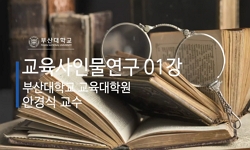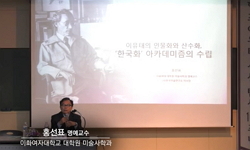본고는 일제강점기 문집 편찬의 전국적 상황을 개괄한 다음, 특히 대구・ 경북지역의 실상과 특징을 보다 자세히 살펴보고자 한 것이다. 전국적 상황을 살펴본 결과, 한문시대가 끝난 것...
http://chineseinput.net/에서 pinyin(병음)방식으로 중국어를 변환할 수 있습니다.
변환된 중국어를 복사하여 사용하시면 됩니다.
- 中文 을 입력하시려면 zhongwen을 입력하시고 space를누르시면됩니다.
- 北京 을 입력하시려면 beijing을 입력하시고 space를 누르시면 됩니다.

일제강점기 문집편찬과 대구・경북지역의 상황 = Literary Collections Compilation during Japanese Colonial Rule, and Situations of Daegu and Gyeongbuk Region
한글로보기https://www.riss.kr/link?id=A102475147
- 저자
- 발행기관
- 학술지명
- 권호사항
-
발행연도
2016
-
작성언어
-
- 주제어
-
KDC
810.5
-
등재정보
KCI등재
-
자료형태
학술저널
- 발행기관 URL
-
수록면
5-40(36쪽)
- DOI식별코드
- 제공처
- 소장기관
-
0
상세조회 -
0
다운로드
부가정보
국문 초록 (Abstract)
본고는 일제강점기 문집 편찬의 전국적 상황을 개괄한 다음, 특히 대구・ 경북지역의 실상과 특징을 보다 자세히 살펴보고자 한 것이다. 전국적 상황을 살펴본 결과, 한문시대가 끝난 것으로 간주해온 1900년 이후 오히려 이전보다 많은 문집이 간행된 사실을 확인할 수 있었다. 간행 주체는 대부분 서당에서 공부한 위정척사 계열의 학자들이었고, 간행 대상은 신라부터 일제강점 당대에 이르기까지 유명한 인물의 문집을 두루 망라하였다. 그리고 이전에 간행한 것을 중간하기도 하고, 미처 간행하지 못한 것을 신간하기도 하는 등 다른 어떤 시대보다 활발한 간행양상을 보였다. 대구・경북지역의 경우, 위정척사 계열의 학자가 다른 어떤 지역보다 많았다. 그래서 이들 또한 문집 간행에 적극 나섰다. 시기적으로는 신라부터 한말까지를 두루 포괄 하였고, 인물형에 있어서도 관료 학자 문장가 등을 가리지 않았다. 그리고 문집 편찬을 주도한 인물은 자신이 곧 문집을 남긴 주인공이기도 하였다.그래서 이들이 남긴 문집을 별도로 검토해본 결과 몇 가지 흥미로운 점이 있었다. 지역별로는 유명 학자의 근거지였던 안동 봉화 칠곡 성주 영천 지역 문집이 특히 많았고, 간행 시기는 광복 이전보다 이후가 오히려 일반적 이었으며, 간행형태는 소규모 석인본의 비중이 높았다. 수록 내용에 있어서도 表箋 狀啓 對策 등 몇 가지 문체는 완전히 사라졌고, 관습적인 시문과 편지의 비중이 높아졌으며, 새로운 시대상을 반영한 글이 추가되기도 하였 다. 이런 사실을 종합적으로 고려할 때 일제강점기를 한문시대가 끝난 것으로 간주하는 관점은 수정할 필요가 있을 듯하였다. 간행한 문집의 총량, 간행 대상으로 삼은 인물의 비중, 문집의 형태와 내용상의 변화 등 여러 면에서 독자적인 가치가 충분하기 때문이다. 따라서 일제강점기는 국문과 한문의 역할이 근본적으로 바뀌어가는 과도기로 보는 것이 바람직할 것으로 판단되며, 이런 관점에서 양자의 서로 다른 역할과 상호작용을 함께 주목할 필요가 있을 듯하다.
다국어 초록 (Multilingual Abstract)
This study examines the nationwide literary collection compilation situations during the Japanese colonial rule of Korea, and takes a close look at the situations and characteristics of Daegu and Gyeongbuk region in this regard. The examination of nat...
This study examines the nationwide literary collection compilation situations during the Japanese colonial rule of Korea, and takes a close look at the situations and characteristics of Daegu and Gyeongbuk region in this regard. The examination of nationwide situations found that, after the 1900s, when the Chinese classics era presumably ended, rather than before, more literary collections were published. They were mostly published by scholars of the Wijeongcheoksa (Pro-Neo-Confucianism Movement) who studied Chinese classics at Seodang schools. Publications covered a wide range of literary collections by famous figures from Silla to the Japanese colonial rule. And, some previous publications were republished, and others were newly published, all suggesting active publication activities. The Daegu and Gyeongbuk region had more Wijeongcheoksa scholars than other regions. They thus were positive in publishing literary collections.
The publication of literary collections widely covered Silla to the time of Japanese colonial rule, and covered diverse figures from government officers to scholars to writers. Those who led the compilation of literary collections were those who authored the literary collections. The examination of such literary collections revealed a few interesting things.By region, there were many literary collections which were produced in Andong, Bonghwa, etc. which were home to many famous scholars, and by publication time, more publications were made after the liberation of Korea than before it. Publication pattern was that the rate of small-scale lithographic printing versions was high. Of recorded contents, certain writing styles of the previous times completely disappeared, the rate of customary poems and letters was high, and writings of new times were added, indicating many changes. Putting together all this, the viewpoint that the Chinese classic era ended by the time of Japanese colonial rule needs to be revised. The transit time when the roles of Korean language and classic Chinese literature fundamentally changed should be set up to pay attention to the interaction thereof.
목차 (Table of Contents)
- 1. 머리말
- 2. 문집편찬의 전국적 상황
- 3. 대구・경북지역의 상황
- 4. 결 론
- 1. 머리말
- 2. 문집편찬의 전국적 상황
- 3. 대구・경북지역의 상황
- 4. 결 론
동일학술지(권/호) 다른 논문
-
間島地域 亡命者들의 文集現況과 特徵 - 을사늑약에서 3・1운동 직후를 중심으로 -
- 대동한문학회
- 이은영(Lee, Eun-young)
- 2016
- KCI등재
-
統監府 發行 “ 普通學校 漢文讀本 ” 의 성격과 배경 * - 계몽기 한국 독본과의 비교연구 -
- 대동한문학회
- 임상석(Lim Sang-Seok)
- 2016
- KCI등재
-
- 대동한문학회
- 정승혜(Chung, Seung-hye)
- 2016
- KCI등재
-
- 대동한문학회
- 宋好彬(Song Ho-bin)
- 2016
- KCI등재





 스콜라
스콜라







